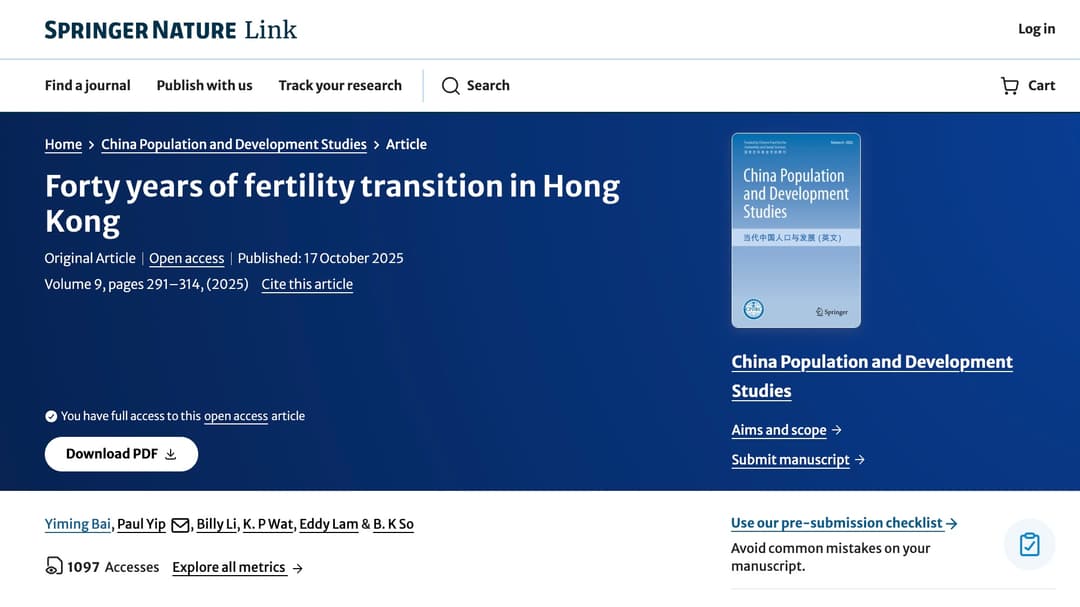Opinion
HK x SG: Public Housing x Urban Sustainability
5 MIN READ
By Matthew H.
Published:
| Updated:
Public Housing Allocation and Urban Sustainability
Hong Kong's public housing misallocation crisis highlights a significant challenge to sustainable urban development, particularly in terms of social equity and resource efficiency. Sustainable urban development, as defined by the United Nations, aims to create cities that are inclusive, safe, resilient, and sustainable (UN SDG 11). A key principle of this concept is ensuring equitable access to adequate, safe, and affordable housing for all citizens.
Hong Kong's current public housing system violates this principle in several ways:
Inequitable distribution: Well-off households occupy subsidised housing while low-income families are forced into substandard private accommodations.
Inefficient resource use: Generous income limits and low rents for high-income tenants lead to misallocation of public resources.
Social segregation: The system inadvertently creates pockets of privilege within public housing, contradicting the goal of inclusive urban spaces.
Comparing Hong Kong's situation with Singapore's public housing model offers valuable insights while acknowledging the differences in land availability and urban planning challenges. Singapore's Housing and Development Board (HDB) has successfully housed over 80% of its population, with about 90% of these residents owning their homes (Phang & Helble, 2016).
Source: Singapore, HDB Research & Planning Dept.
The graph shows a steady growth in the percentage of the resident population living in HDB flats, which offers strong evidence that Singapore offers everyone affordable, sustainable housing, giving everyone a better living environment.
Key factors contributing to Singapore's success include:
Strict eligibility criteria: Regular reviews and adjustments of income ceilings for public housing applicants.
Homeownership focus: Various schemes encourage residents to own their homes, promoting long-term financial security and community stability.
Diverse housing options: The HDB offers a range of housing types and sizes, including:
- 2-room Flexi flats for low-income families and elderly
- 3-room flats for small families
- 4-room and 5-room flats for larger families
- Executive flats for higher-income families
Source: Home Reno Guru SG
Hong Kong can draw inspiration from Singapore's approach, particularly in diversifying housing options and promoting homeownership. However, it's crucial to acknowledge Hong Kong's unique challenges, such as limited land supply and reliance on reclamation for urban expansion (Ng, 2018).
One pressing issue in Hong Kong is the severe shortage of public housing for single-person households. The Housing Bureau Director, Winnie Ho, in a written response to the legislator’s question, said there are 38,600 cases of non-elderly one-person applicants, 52 per cent of them with education level of higher education or above. (Housing Authority, 2024) This disparity highlights the need for a more diverse and responsive housing supply.
To address these issues and move towards a more sustainable urban housing model, Hong Kong could consider the following approaches:
Implement a tiered rental system: Introduce a more progressive rental structure that better reflects market rates for higher-income tenants, encouraging well-off residents to transition to private housing.
Encourage transition to homeownership: Develop schemes to help public housing tenants transition to homeownership, including subsidies, grants, or preferential mortgage rates for first-time buyers from public housing.
Regularly review and adjust eligibility criteria: Ensure that income and asset limits are updated annually to reflect economic changes and target assistance to those most in need.
Diversify housing options: Introduce a wider range of public housing types, with a particular focus on addressing the shortage of units for single-person households. This could include:
- Micro-units for single individuals or elderly
- Standard units for small families
- Larger units for extended families
- Mixed-income developments to promote social integration
Innovative land use strategies: Given Hong Kong's limited land supply, explore innovative solutions such as:
Redeveloping older public housing estates to increase density and improve living conditions
Utilising underground spaces for non-residential purposes to free up land for housing
These approaches would not only address the immediate issues of housing misallocation but also contribute to the broader goals of sustainable urban development. By ensuring that public resources are more equitably distributed, Hong Kong can work towards creating a more inclusive and resilient urban environment.
Moreover, addressing housing insecurity is crucial for urban sustainability beyond just the housing sector. Adequate housing is linked to better health outcomes, improved educational attainment, and increased economic productivity (World Health Organization, 2018). While the situation in Hong Kong is incredibly unique and complex, through continuous efforts and measures Hong Kong can potentially see positive ripple effects across various aspects of urban life.
In conclusion, Hong Kong's current public housing allocation system presents significant challenges to sustainable urban development principles of equity, efficiency, and inclusivity. While learning from successful models like Singapore's, Hong Kong must also develop tailored solutions that address its unique geographical and urban planning constraints. Hong Kong can work towards a more equitable and sustainable urban future by aligning policies with international sustainability goals and focusing on innovative, context-specific approaches.
Urban Sustainability.
Musicamatics Labs x The Once Times.
Hong Kong Edition.
Citations:
United Nations. (n.d.). Sustainable Development Goal 11.
World Health Organization. (2018). WHO housing and health guidelines.






